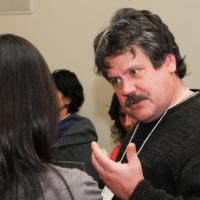Public programmes, growth, and economic inequality in rural India
While India as a whole has seen rapid economic growth over the last two decades, there is a substantial question about whether and how poor households, particularly those concentrated in rural areas have been affected by this growth and whether they are likely to benefit from future growth. While the focus of efforts to improve rural incomes in the 1960s-1980s was primarily on increasing productivity in agriculture, efforts in the last two decades have focused more centrally on public welfare programmes and on improving the quantity and quality of investment in education and health. It is unclear, however, how effective these mechanisms have been in increasing the economic mobility of poorer households. Certainly participation in such public welfare programs such as the widely studied Mahatma Gandhi National Rural Employment Guarantee (MGNREG) can and has helped to provide basic subsistence income to hundreds of millions of households. It is less clear, however, how such programmes have contributed to the longer-term economic well-being of these households. Understanding this mobility requires not only an assessment of patterns of uptake of these different programmes but also analysis of how these programmes interact with other emerging opportunities in rural areas and in potential migrant destinations as well as the extent to which local health and educational opportunities prepare individuals for emerging opportunities.
In this project, we conduct a large-scale survey of rural India that will cover all households in study villages, and can be linked to the REDS panel data set that was first collected by NCAER in the 1967-68. The data will then be used to examine the following questions:
- How have patterns of inequality and economic mobility changed in rural India over the last four decades?
- To what extent are patterns of inequality and economic mobility affected by village-level access to different types of anti-poverty programmes?
- How have processes of migration and inter-household financial transfers influenced patterns of inequality and economic mobility?
- How have transitions in the economy inclusive of growth of the non-farm sector and increased mechanisation in agriculture influenced patterns of inequality and economic mobility?
The project is being conducted through the auspices of the Institute for Rural Management in Anand (IRMA). This is an ideal connection as IRMA is a central locus for the training of workers in rural public sector activities. It has a large number of alumni working in rural governance and frequently brings to campus practitioners involved in rural governance and outreach. By carrying out this research with IRMA we will be able to use the IRMA network to ensure that the work reflects detailed on the ground knowledge of the practice of design and implementation of pro-poor programmes in rural India as well as to ensure that the lessons of this research reach a broad audience.





